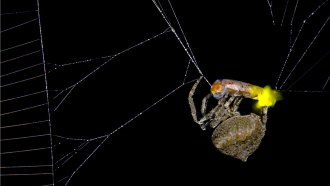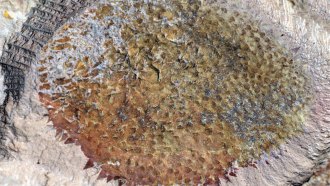
Erin Garcia de Jesús is a staff writer at Science News. She holds a Ph.D. in microbiology from the University of Washington, where she studied virus/host co-evolution. After deciding science as a whole was too fascinating to spend a career studying one topic, she went on to earn a master’s in science communication from the University of California, Santa Cruz. Her writing has appeared in Nature News, Science, Eos, Smithsonian Voices and more, and she was the winter 2019 science writing intern at Science News.

Trustworthy journalism comes at a price.
Scientists and journalists share a core belief in questioning, observing and verifying to reach the truth. Science News reports on crucial research and discovery across science disciplines. We need your financial support to make it happen – every contribution makes a difference.
All Stories by Erin Garcia de Jesús
-
 Health & Medicine
Health & MedicineWhy finding bird flu in a U.S. pig for the first time is raising new worries
Swine can act as so-called “mixing vessels” for human and bird flus, giving avian viruses an opportunity to adapt for spreading in people.
-
 Animals
AnimalsA single enzyme can alter the vibrant colors in parrot plumage
Tweaking the chemical composition of a parrot-specific pigment can shift feathers from red to yellow or green.
-
 Life
LifeHere are some stellar picks from Nikon’s top microscopy images of 2024
The annual Small World photomicrography competition, now in its 50th year, puts life’s smallest details under the microscope.
-
 Plants
PlantsCarnivorous plants eat faster with a fungal friend
Insects stuck in sundew plants’ sticky secretions suffocate and die before being subjected to a medley of digestive enzymes.
-
 Animals
AnimalsThis fish has legs — and it uses them for more than just walking
Some sea robins have taste buds on their six crablike legs that help the fish ferret out prey buried in sand as they walk.
-
 Health & Medicine
Health & MedicineVaccines for mpox are finally reaching Africa. But questions about the virus remain
With concerns that mpox may now spread more easily and be more severe, researchers warn that failing to curb the outbreak means “nobody is safe.”
-
 Neuroscience
NeuroscienceSome healthy fish have bacteria in their brains
Animals including mammals usually protect their brains from infiltrating microbes that can cause disease. But some fish seem to do just fine.
-
 Health & Medicine
Health & MedicineCalifornia droughts may help valley fever spread
Droughts temporarily dampen the number of valley fever cases across the state, but cases spike in the years after rains return.
-
 Health & Medicine
Health & Medicine50 years ago, some of plastic’s toxic hazards were exposed
Worker exposure to vinyl chloride became tightly regulated after the chemical was linked with liver cancer. Now, its use may be on the chopping block.
-
 Health & Medicine
Health & MedicineExtreme heat and rain are fueling rising cases of mosquito-borne diseases
Extreme Climate Update looks at the perfect storm climate change is creating for mosquitoes and the diseases they carry, like dengue and West Nile.
-
 Animals
AnimalsThis spider uses trapped fireflies to lure in more prey
Male fireflies trapped in the spider’s web flash femalelike lights, possibly luring in other flying males and allowing the arachnid to stock up on food.
-
 Paleontology
PaleontologyThis spiky fossil shows what early mollusks looked like
The fossil, plus 17 others from more than 500 million years ago, reveal that early mollusks were slug-like creatures with prickly armor.